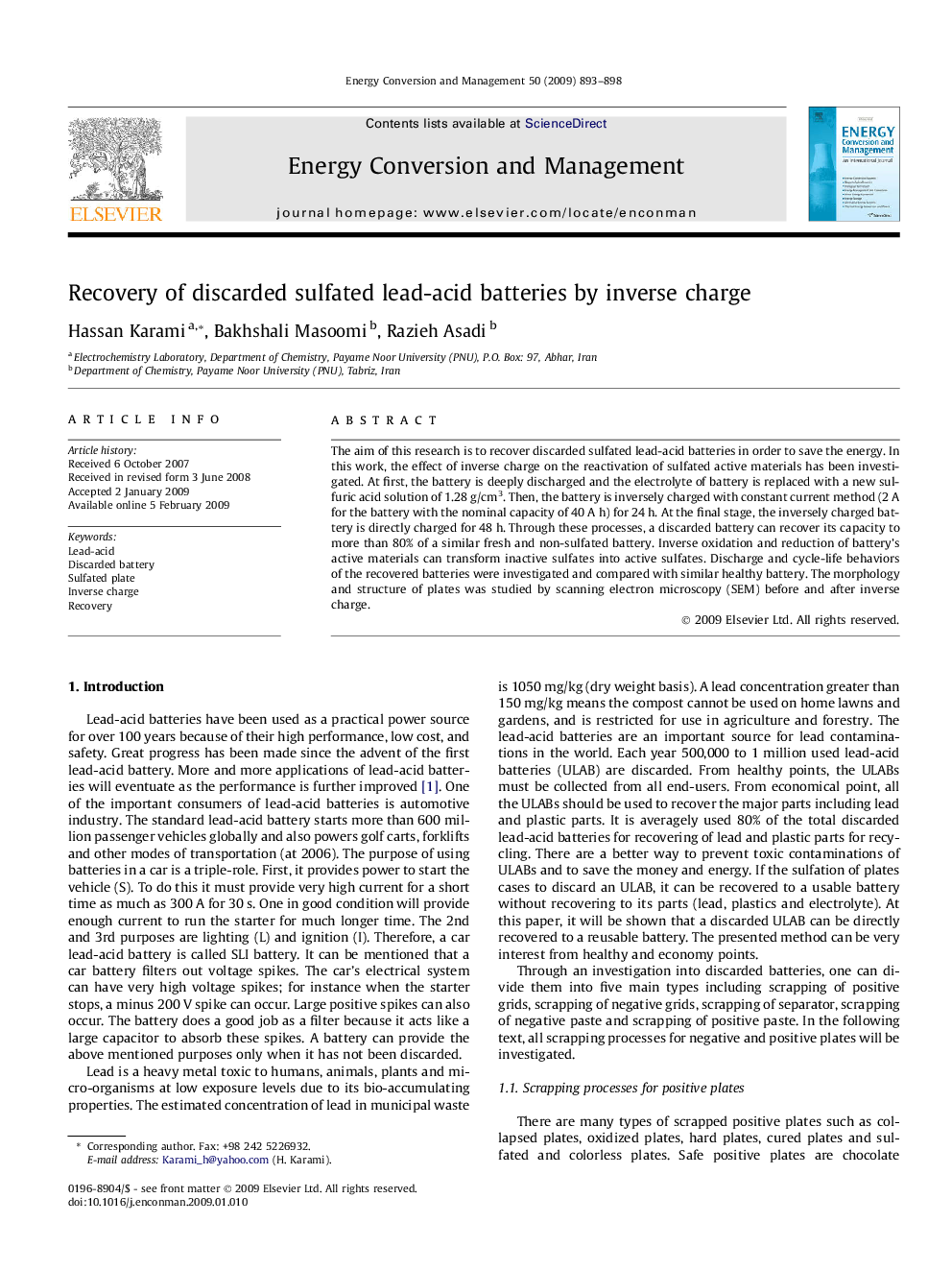| Article ID | Journal | Published Year | Pages | File Type |
|---|---|---|---|---|
| 766252 | Energy Conversion and Management | 2009 | 6 Pages |
The aim of this research is to recover discarded sulfated lead-acid batteries in order to save the energy. In this work, the effect of inverse charge on the reactivation of sulfated active materials has been investigated. At first, the battery is deeply discharged and the electrolyte of battery is replaced with a new sulfuric acid solution of 1.28 g/cm3. Then, the battery is inversely charged with constant current method (2 A for the battery with the nominal capacity of 40 A h) for 24 h. At the final stage, the inversely charged battery is directly charged for 48 h. Through these processes, a discarded battery can recover its capacity to more than 80% of a similar fresh and non-sulfated battery. Inverse oxidation and reduction of battery’s active materials can transform inactive sulfates into active sulfates. Discharge and cycle-life behaviors of the recovered batteries were investigated and compared with similar healthy battery. The morphology and structure of plates was studied by scanning electron microscopy (SEM) before and after inverse charge.
